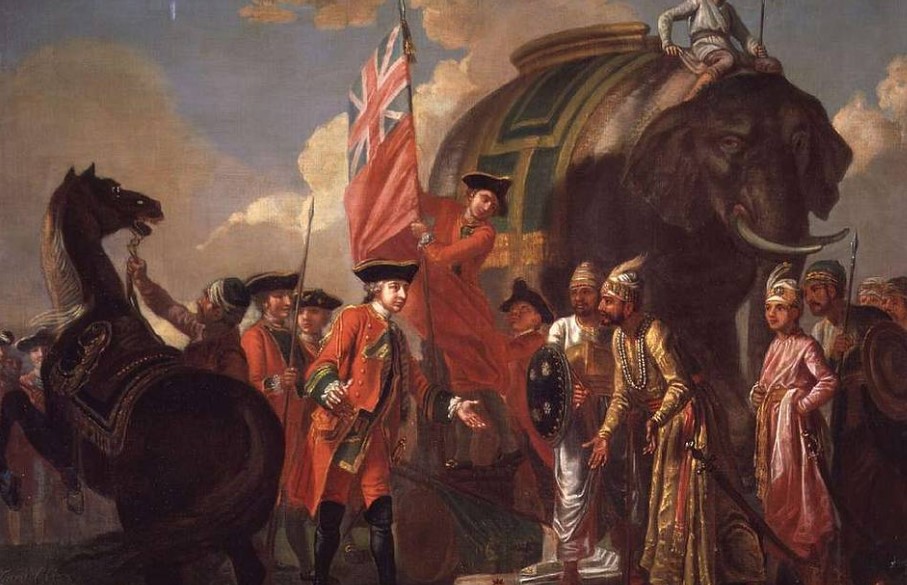
Modern History MCQs – 1 (Arrival of Europeans in India)
Most important multiple choice questions from the chapter – Arrival of Europeans in India MCQs.
Home » UPSC Study Materials » Prelims Express » Chapterwise MCQs » Modern History MCQs » Modern History MCQs – 3 (Social and Religious Reform Movements)
Social and Religious Reform Movements MCQs with answers and explanations for all Examinations.
Recommandation :- Read Short Notes on Socio-Religious Reform Movements of Modern India before attempting the questions.
1. Who among the following gave the title of ‘Raja’ to Ram Mohan Roy ?
(a) Mahatma Gandhi
(b) Akbar
(c) Akbar II
(d) Jahangir
Correct Answer: (c) Akbar II
2. Raja Ram Mohan Roy was associated with which of the following ?
(a) Atmiya Sabha
(b) The Calcutta Unitarian Committee
(c) Brahma Sabha
(d) All of the above
Correct Answer: (d) All of the above
3. Which of the following Literary works was not published by Raja Ram Mohan Roy ?
(a) Sambad Kaumudi
(b) Tuhfat-ul-Muwahhidin
(c) Mirat-ul-Akhbar
(d) Ain-i-Akbari
Correct Answer: (d) Ain-i-Akbari
4. ‘Adi Brahmo Samaj’ was established by ?
(a) Keshub Chandra Sen
(b) Debendranath Tagore
(c) Rabindranath Tagore
(d) Raja Rammohan Roy
Correct Answer: (b) Debendranath Tagore
5. ‘Satya Shodhak Samaj’ was established by ?
(a) Keshub Chandra Sen
(b) Debendranath Tagore
(c) Jyotiba Phule
(d) Raja Rammohan Roy
Correct Answer: (c) Jyotiba Phule
6. ‘Gulamgiri’ was written by which among the following social reformers ?
(a) Keshub Chandra Sen
(b) Dayananda Saraswati
(c) Jyotiba Phule
(d) Raja Rammohan Roy
Correct Answer: (c) Jyotiba Phule
7. ‘Satyarth Prakash’ is a famous literary work by ?
(a) Keshub Chandra Sen
(b) Dayananda Saraswati
(c) Jyotiba Phule
(d) Raja Rammohan Roy
Correct Answer: (b) Dayananda Saraswati
8. The slogan of “Back to the Vedas” was given by which of the following social reformers ?
(a) Keshub Chandra Sen
(b) Dayananda Saraswati
(c) Jyotiba Phule
(d) Raja Rammohan Roy
Correct Answer: (b) Dayananda Saraswati
9. Who among the following started the ‘Young Bengal Movement’ ?
(a) Keshub Chandra Sen
(b) Dayananda Saraswati
(c) Swami Vivekananda
(d) Henry Louis Vivian Derozio
Correct Answer: (d) Henry Louis Vivian Derozio
10. Who among the following started the Aligarh Movement ?
(a) Rashid Ahamad Gangohi
(b) Sayyid Ahmed Khan
(c) Muhammad Qasim Wanotavi
(d) Henry Louis Vivian Derozio
Correct Answer: (b) Sayyid Ahmed Khan
More questions are coming soon. Join us on Whatsapp for latest updates: Join CivilsCracker on Whatsapp

Most important multiple choice questions from the chapter – Arrival of Europeans in India MCQs.

Most important multiple choice questions from the chapter – Battle of Plassey and Battle of Buxar MCQs.

Most important multiple choice questions from the chapter – Anglo Mysore Wars and Anglo Maratha Wars MCQs.

Most important multiple choice questions from the chapter – Governor Generals of India MCQs.

Most important multiple choice questions from the chapter – Revolt of 1857 MCQs.

Most important multiple choice questions from the chapter – Organizations before Indian National Congress MCQs.

Most important multiple choice questions from the chapter – Important Sessions of Indian National Congress MCQs.

Most important multiple choice questions from the chapter – Partition of Bengal and Swadeshi Movement MCQs.

Most important multiple choice questions from the chapter – Surat Split and Lucknow Pact MCQs.

Most important multiple choice questions from the chapter – Arrival of Gandhi and Jallianwala Bagh Massacre MCQs.
We are adding new Notes, Chapterwise MCQs, Quizzes, Previous Years Questions everyday
We are adding new Notes, Chapterwise MCQs, Quizzes, Previous Years Questions everyday